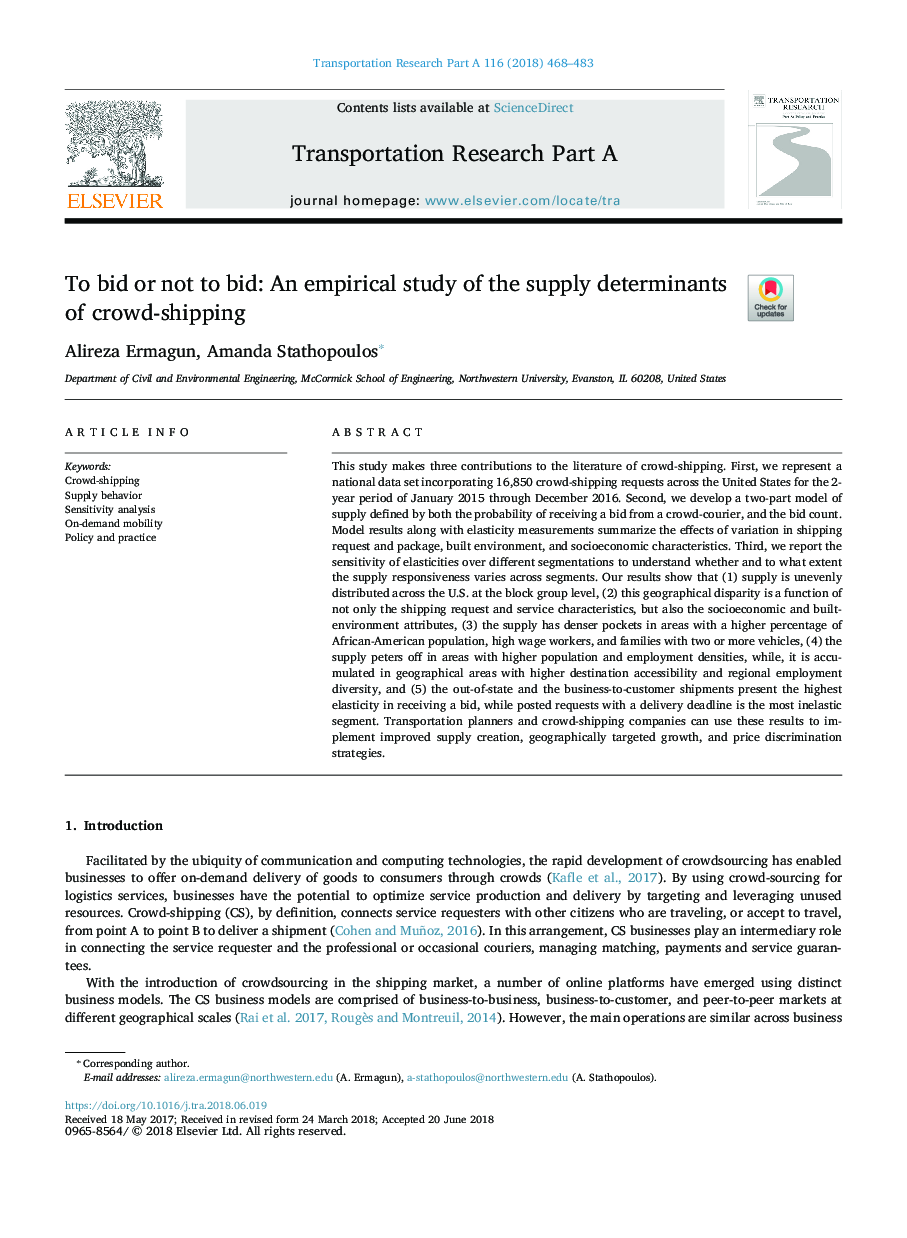| Article ID | Journal | Published Year | Pages | File Type |
|---|---|---|---|---|
| 6779800 | Transportation Research Part A: Policy and Practice | 2018 | 16 Pages |
Abstract
This study makes three contributions to the literature of crowd-shipping. First, we represent a national data set incorporating 16,850 crowd-shipping requests across the United States for the 2-year period of January 2015 through December 2016. Second, we develop a two-part model of supply defined by both the probability of receiving a bid from a crowd-courier, and the bid count. Model results along with elasticity measurements summarize the effects of variation in shipping request and package, built environment, and socioeconomic characteristics. Third, we report the sensitivity of elasticities over different segmentations to understand whether and to what extent the supply responsiveness varies across segments. Our results show that (1) supply is unevenly distributed across the U.S. at the block group level, (2) this geographical disparity is a function of not only the shipping request and service characteristics, but also the socioeconomic and built-environment attributes, (3) the supply has denser pockets in areas with a higher percentage of African-American population, high wage workers, and families with two or more vehicles, (4) the supply peters off in areas with higher population and employment densities, while, it is accumulated in geographical areas with higher destination accessibility and regional employment diversity, and (5) the out-of-state and the business-to-customer shipments present the highest elasticity in receiving a bid, while posted requests with a delivery deadline is the most inelastic segment. Transportation planners and crowd-shipping companies can use these results to implement improved supply creation, geographically targeted growth, and price discrimination strategies.
Related Topics
Physical Sciences and Engineering
Engineering
Civil and Structural Engineering
Authors
Alireza Ermagun, Amanda Stathopoulos,
